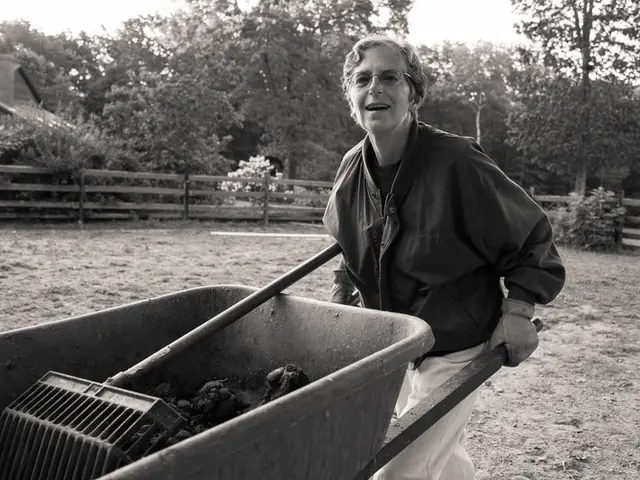Method for revitalizing specific orchid species for improved blooms and contentment: Correct technique for pruning orchids
Orchids, with their stunning blooms and exotic allure, are a popular choice for indoor gardening. However, maintaining these beautiful plants requires careful pruning and repotting to ensure their continued health and reblooming. Here's a guide to pruning and repotting some common orchids:
Pruning Orchids
Pruning varies by orchid type, but the general principle remains the same: remove old flower spikes and dead or damaged leaves to promote healthy growth.
- Dendrobium: After flowering, prune old flower canes back near the base once they turn brown and dry. Do not cut green canes as they store nutrients and support growth.
- Phalaenopsis: When flowers fade, cut the flower spike just above the 2nd or 3rd node (joint) from the base to encourage a new spike, or cut it off entirely near the base if it’s old and brown. Remove yellow or dead leaves as needed.
- Vanda: Cut old flower stalks at their base after blooming ends. Remove dead or dying leaves regularly but avoid heavy pruning of healthy foliage as these orchids rely on their leaves for photosynthesis.
- Oncidium: Pruning mainly involves cutting off old flower spikes at the base once blooming finishes. Dead or yellowing leaves can also be trimmed away to maintain plant health.
- Cattleya: Cut spent flower spikes near their base after blooming. Remove any dead or yellow leaves. Be cautious not to damage new growth.
- Cymbidium: Conventional pruning includes cutting old flower spikes at the base post-bloom and trimming away dead or unhealthy leaves.
When pruning, use clean, sharp pruners. After pruning, it's common for a leaf to be lost every couple of years. These should be removed as they occur.
Repotting Orchids
Orchids may require repotting every two years to freshen the soil and move to larger housing if necessary. When repotting, investigate the roots for any damage or disease, and clean out anything that doesn't look healthy.
- Dendrobium: The long, thick pseudobulbs should not be cut.
- Cymbidium: Orchid roots may require pruning during repotting. Cymbidium orchid flower stalks should be cut back to the bud sheath.
- Phalaenopsis, Vanda, Oncidium, and Cattleya: Orchid pruning should be done at the joint or node, where new growth will emerge.
- Aerial roots should not be pruned unless they are damaged.
After repotting, spray any areas that have been cut with a dilution of hydrogen peroxide and allow it to air dry before repotting the plant. Avoid allowing excess water to sit at the base of the plant, as it can cause the roots to rot.
Watering Orchids
In the summer, water orchids once a week. In the winter, once every two weeks is sufficient. Common orchid problems such as yellow or wrinkled leaves can help determine the extent or nature of certain cuts.
For added support, sturdy bamboo plant supports for orchids can be bought at Walmart in packs of 20-25. With these guidelines, you can keep your orchids thriving and blooming beautifully.
- Adopting the right home-and-garden practices can help nurture a striking home lifestyle, as demonstrated in the art of orchid care.
- To optimize the growth and blooming of your orchids, follow techniques such as pruning for healthyier plant development, and periodic repotting for soil refreshment, as detailed in this guide.




